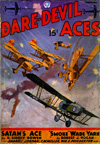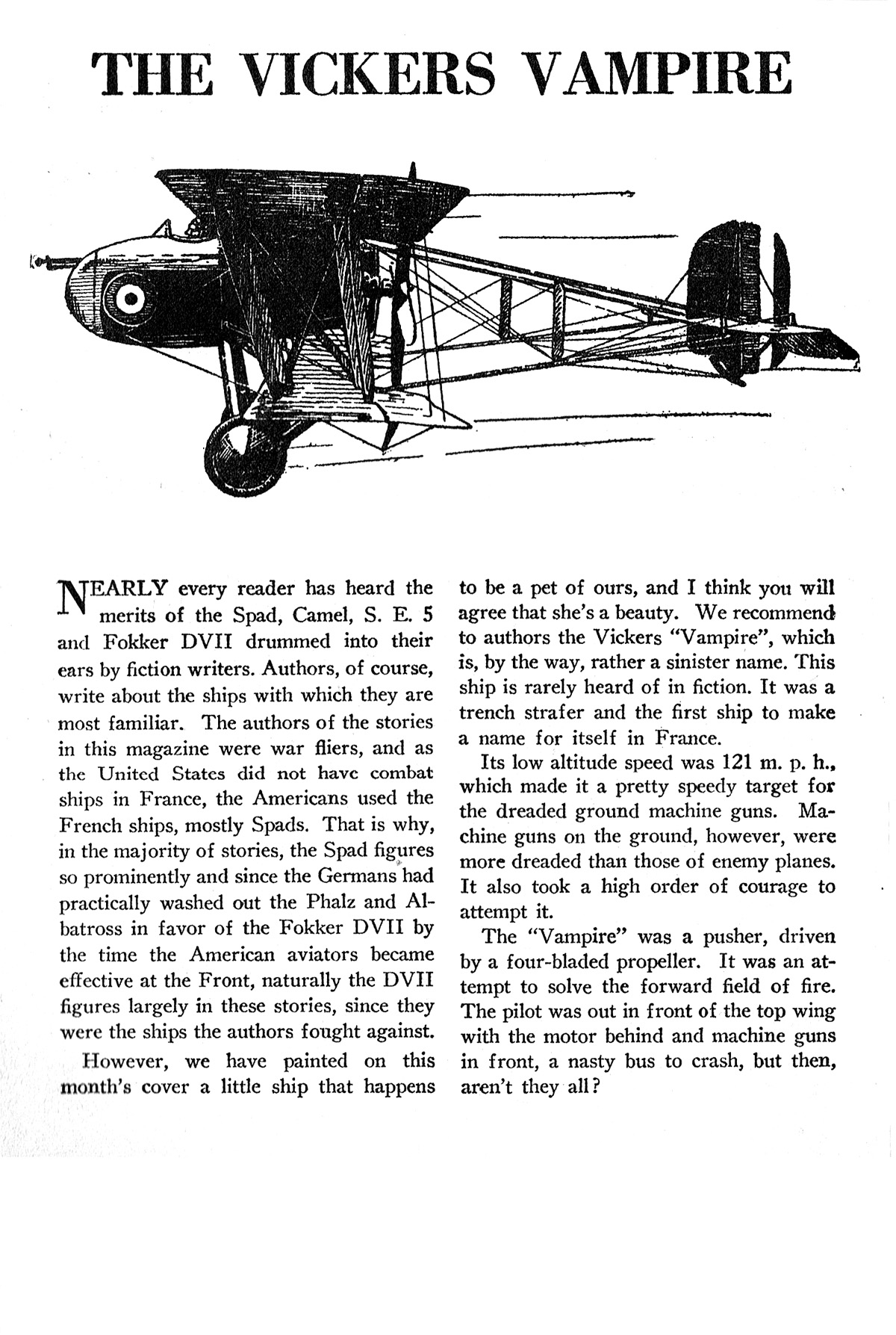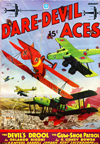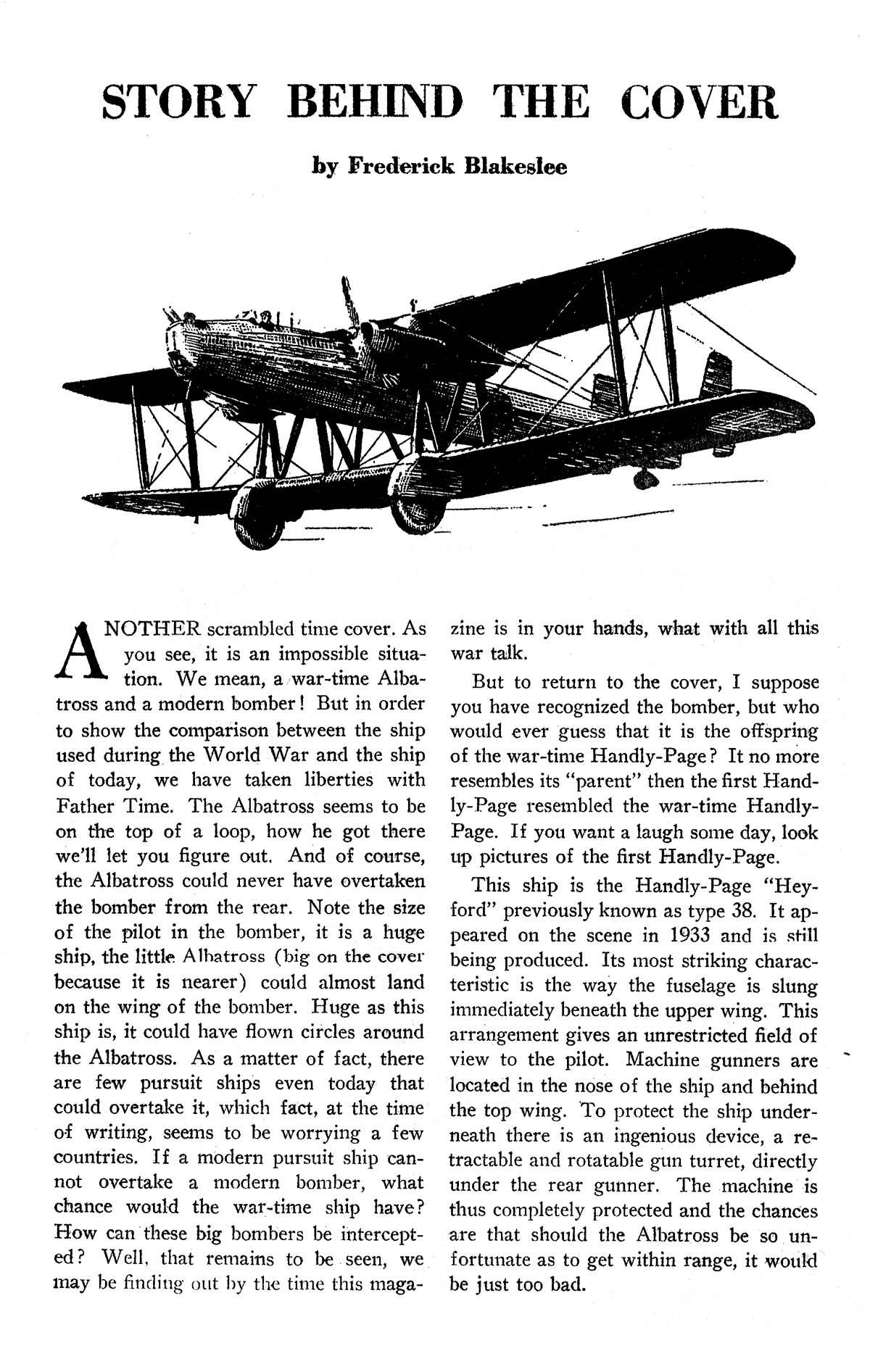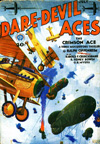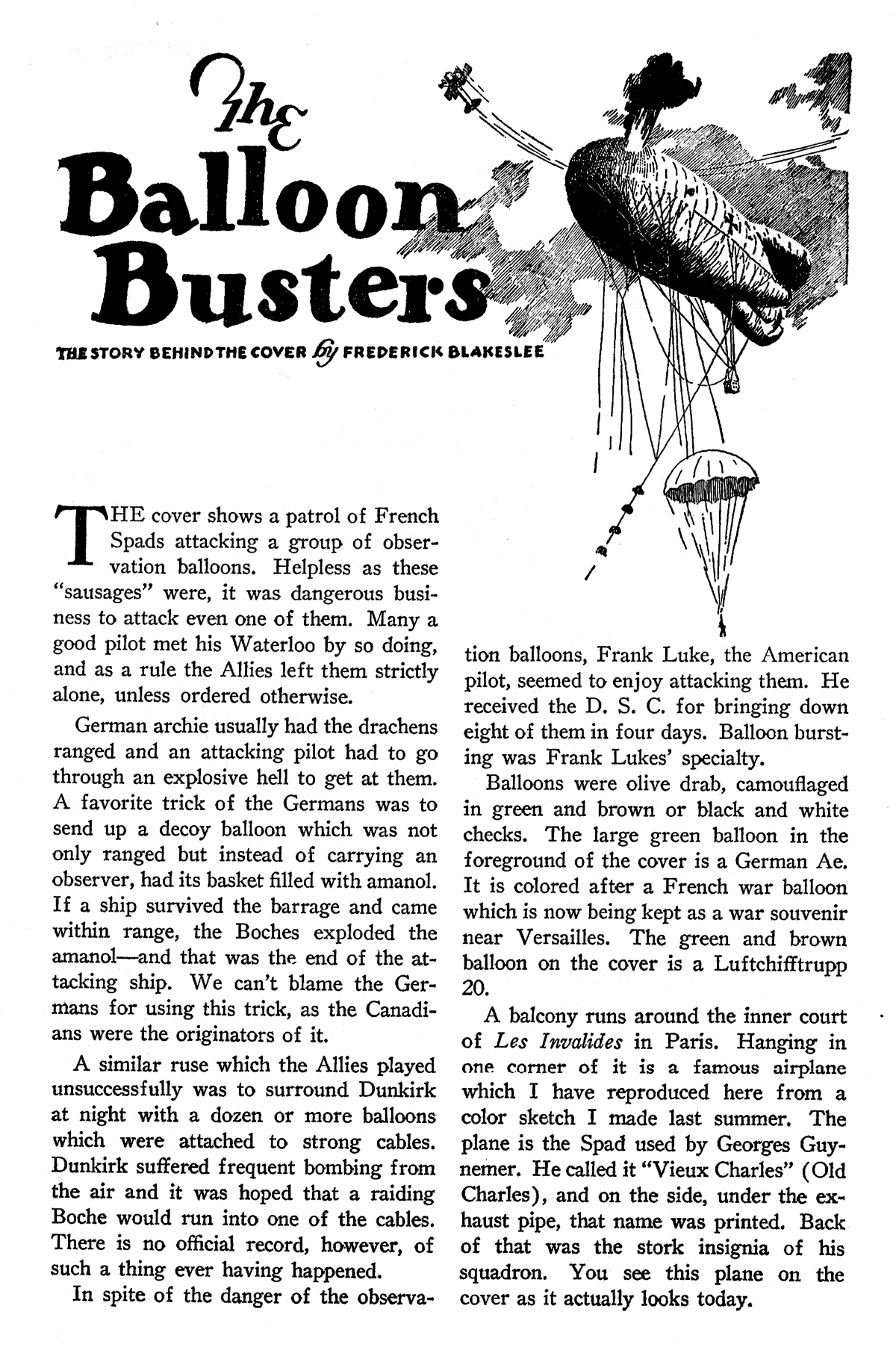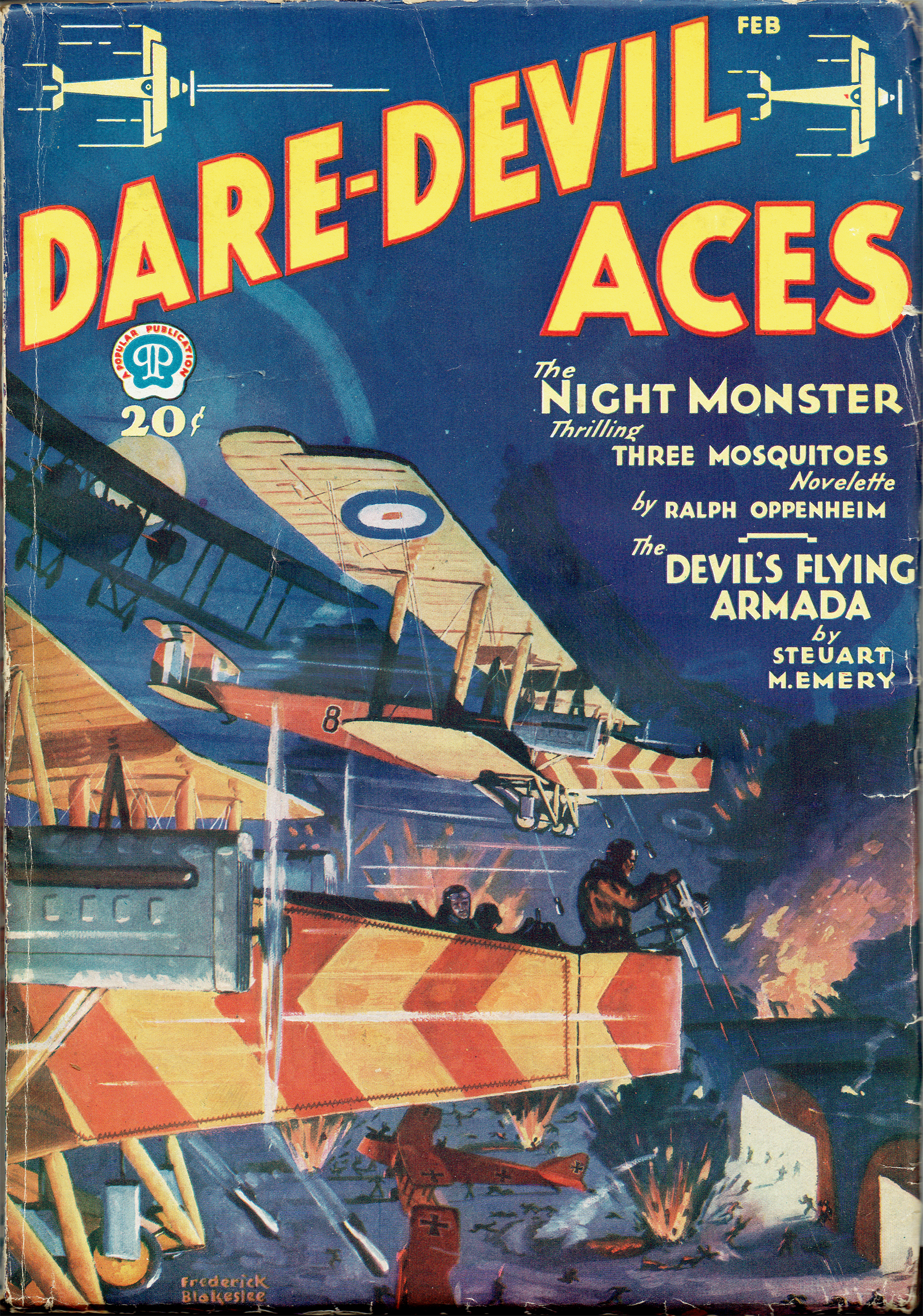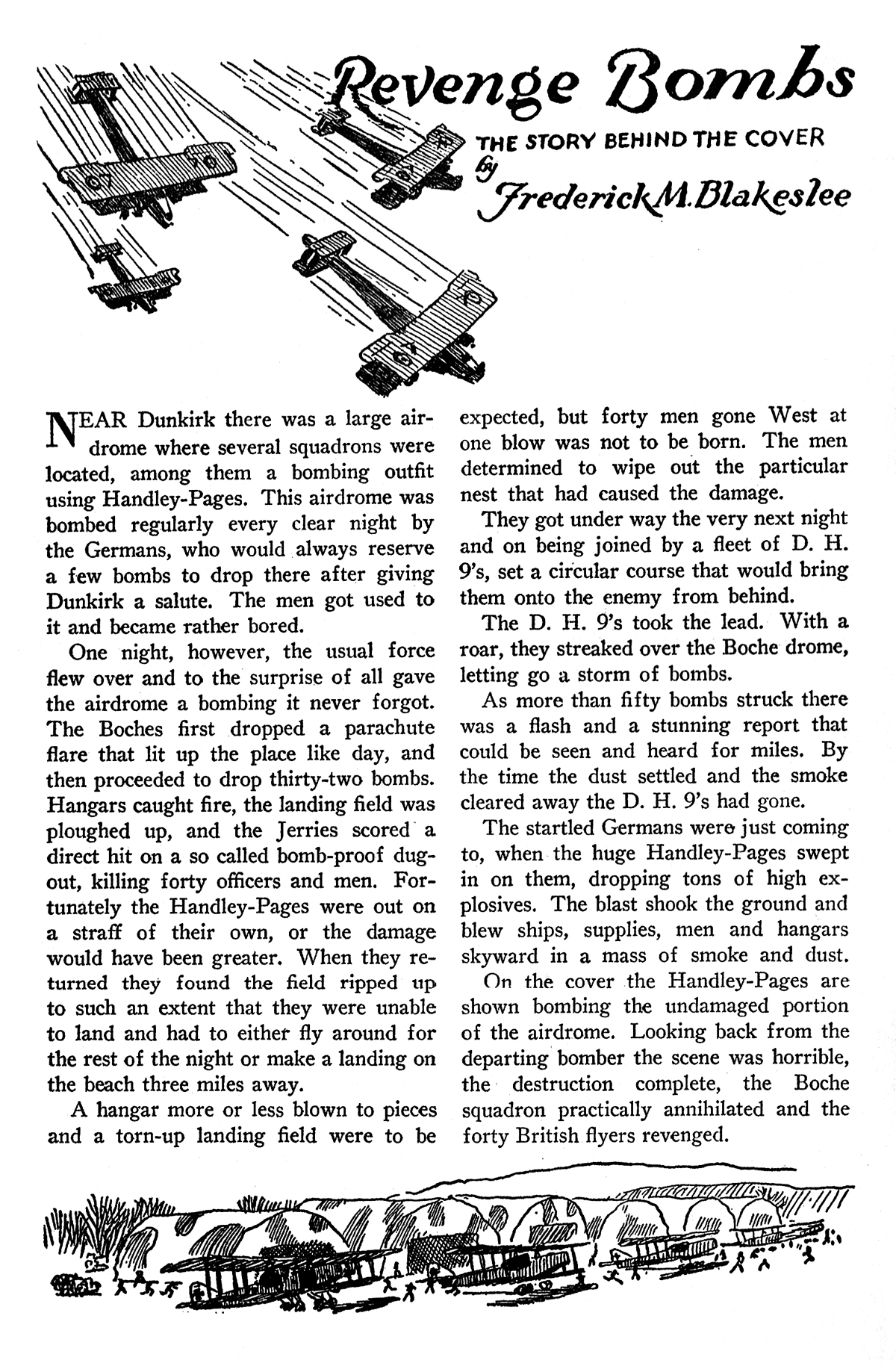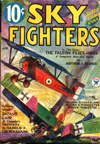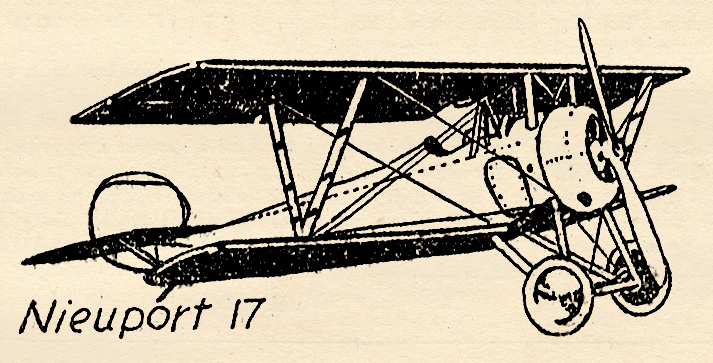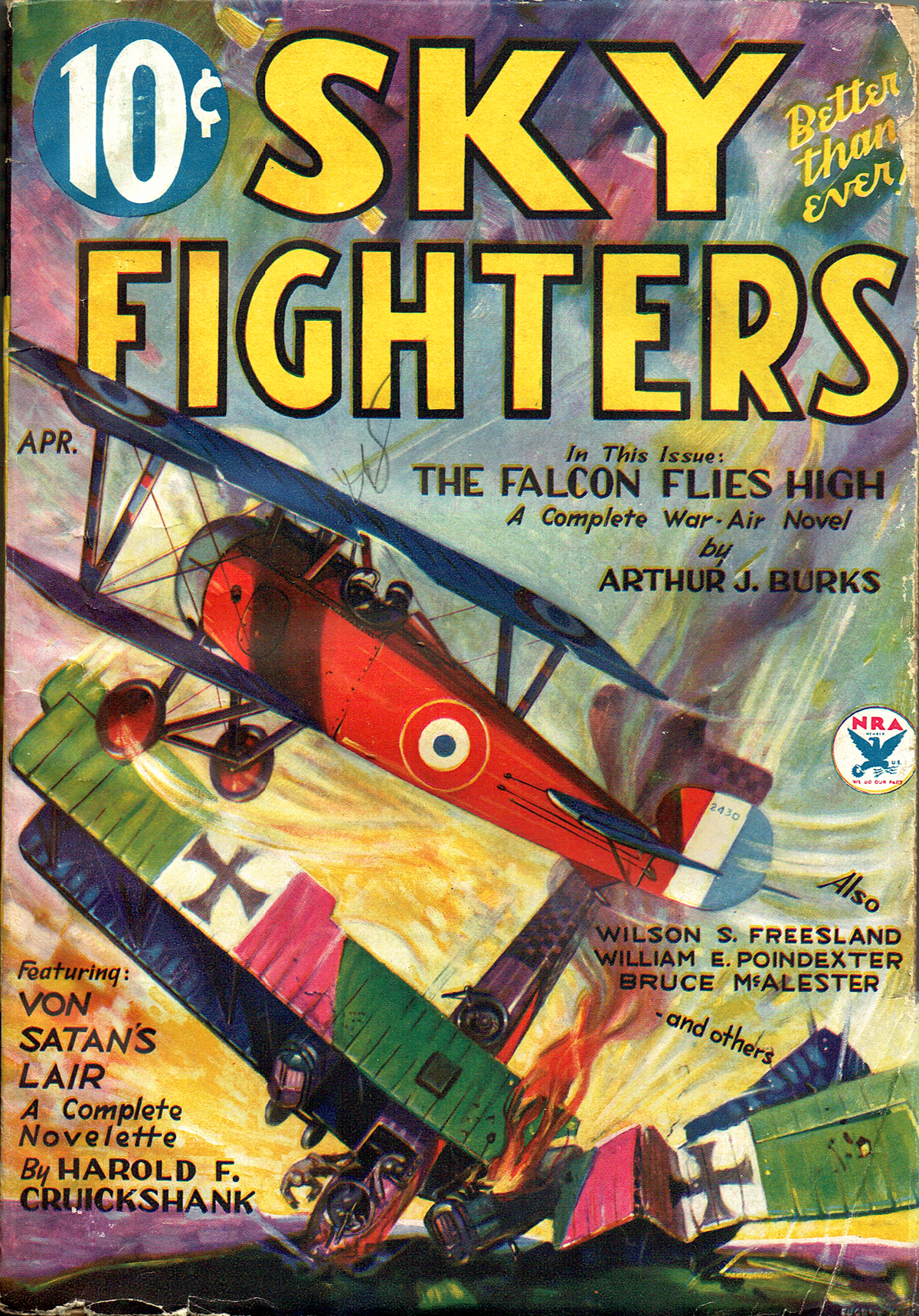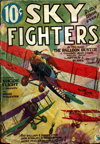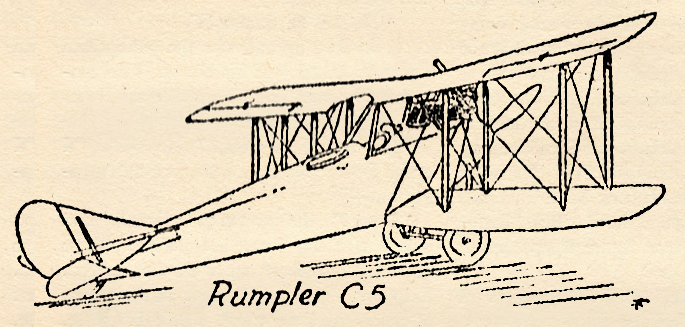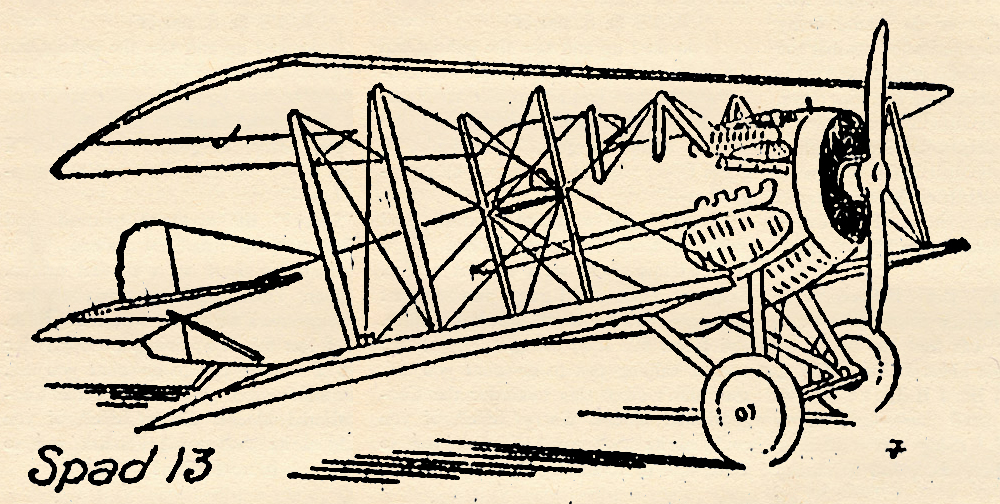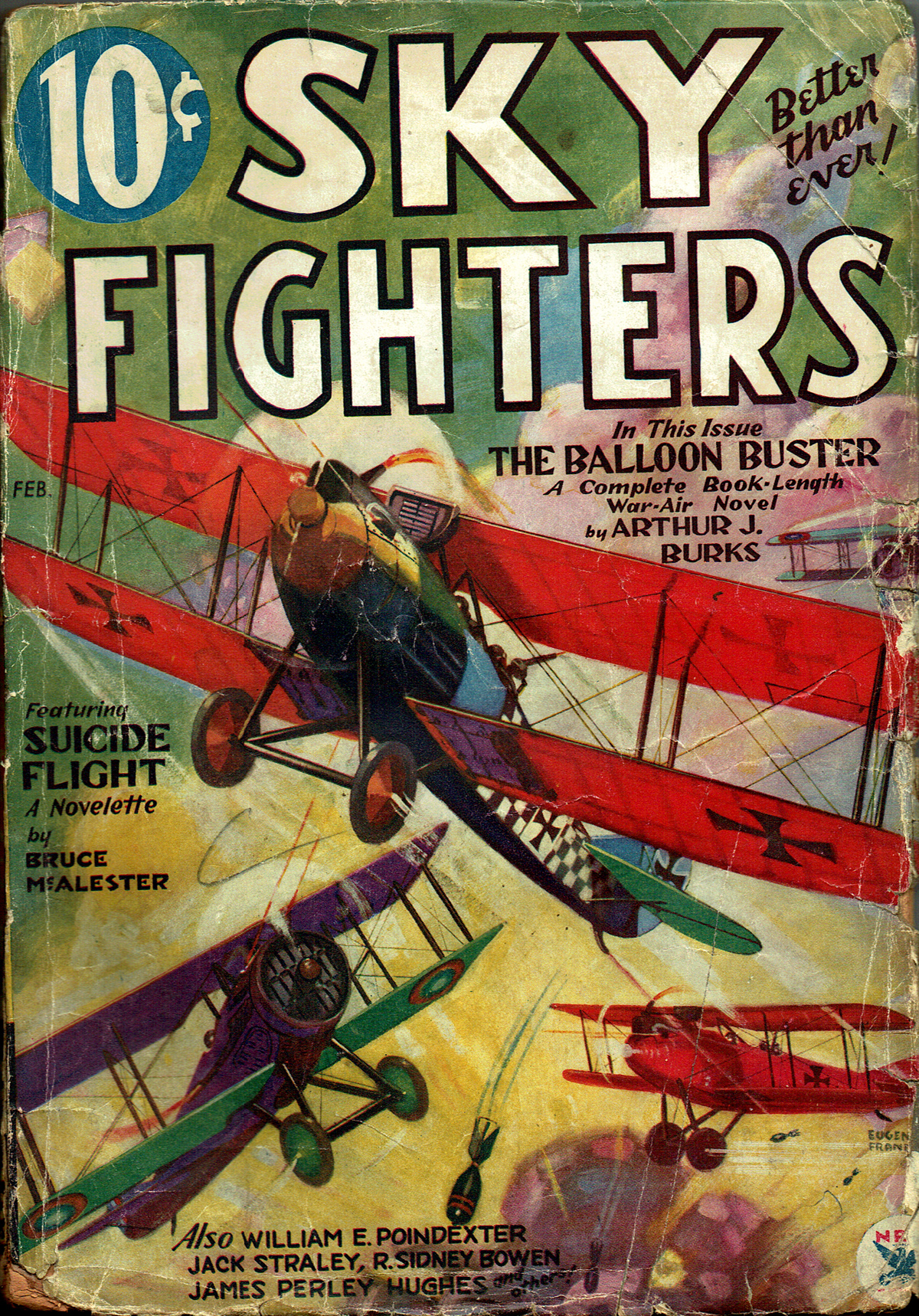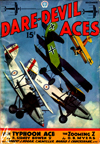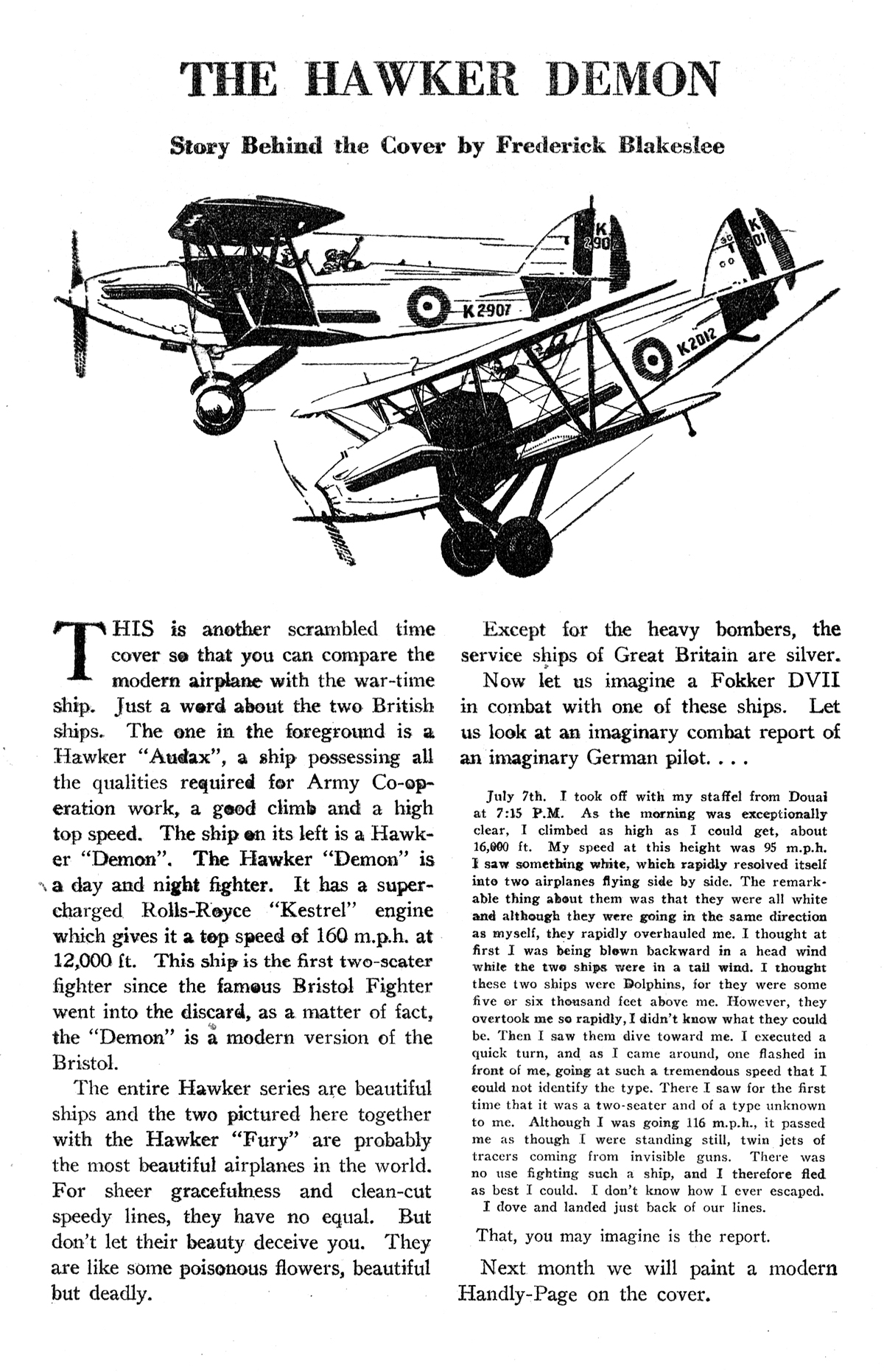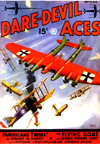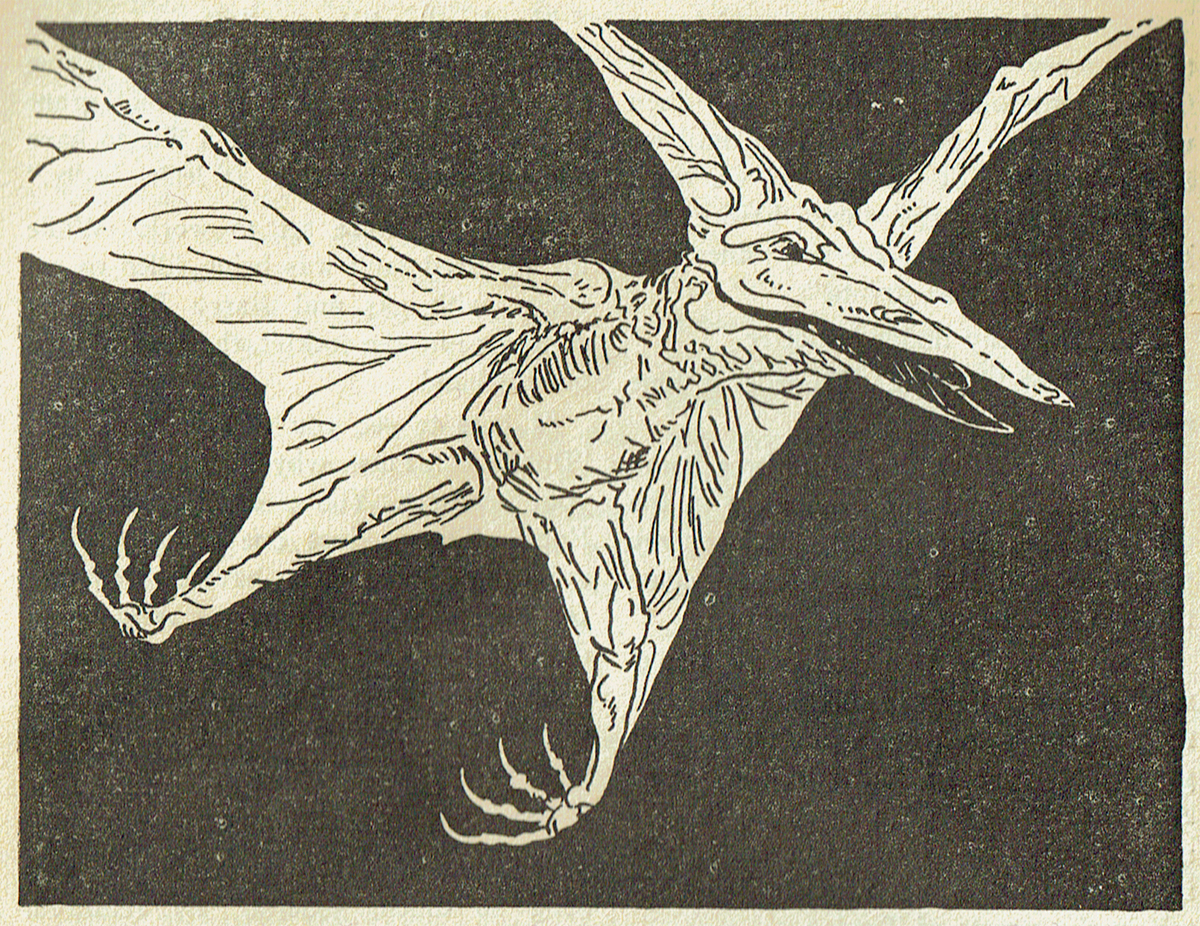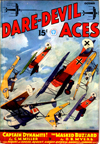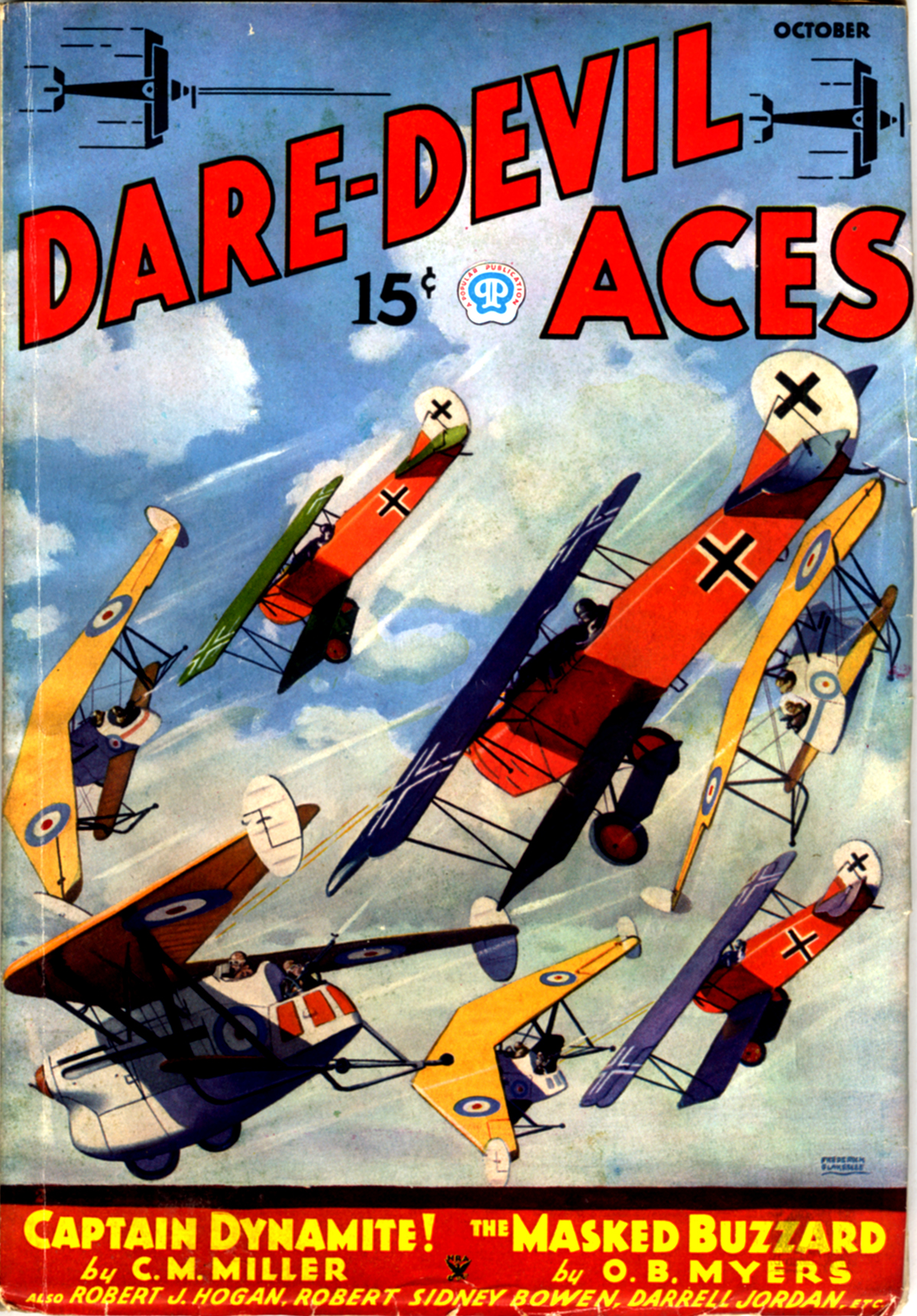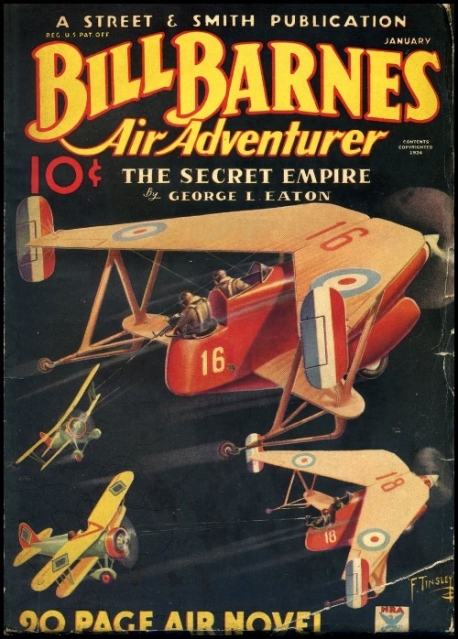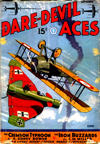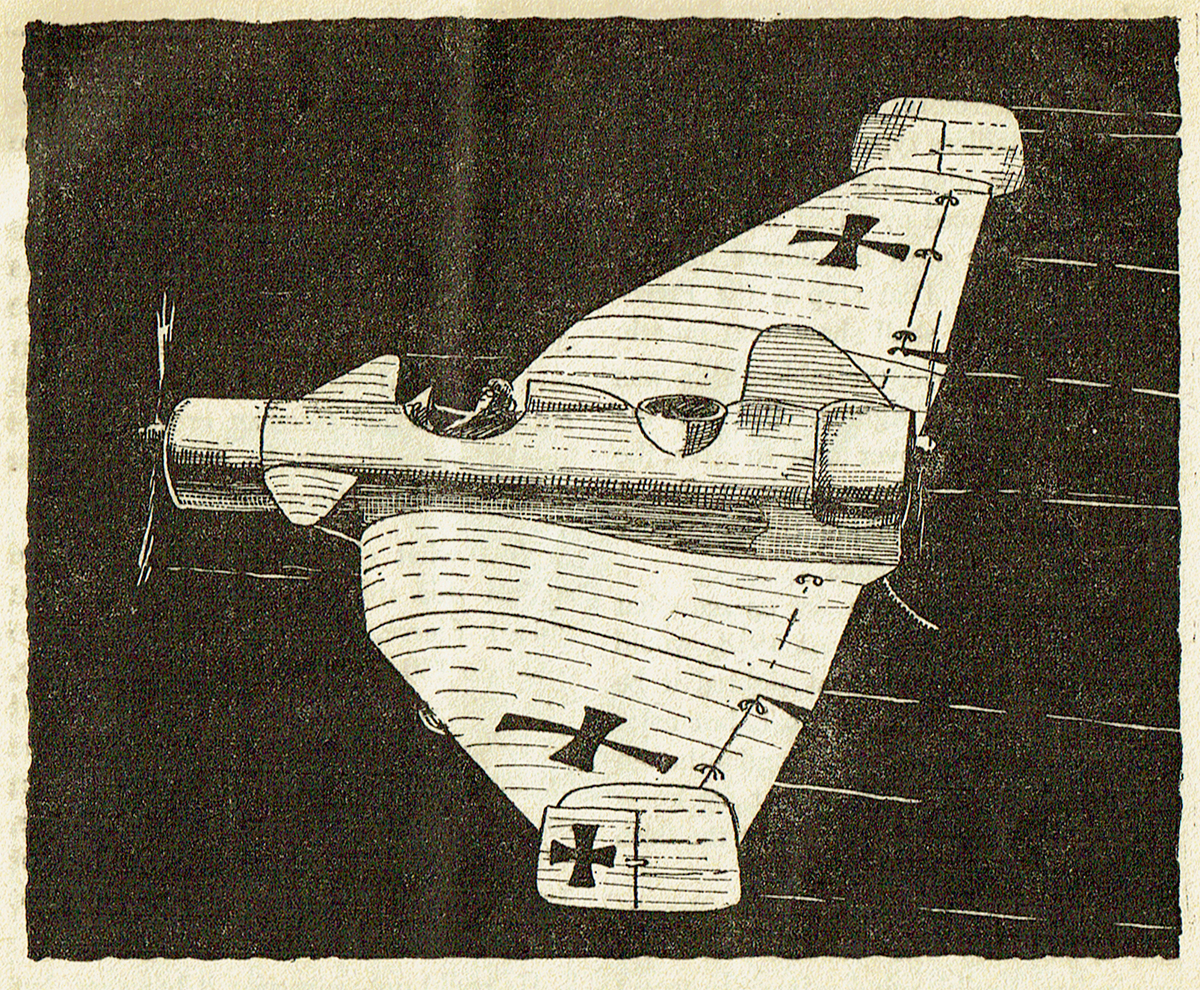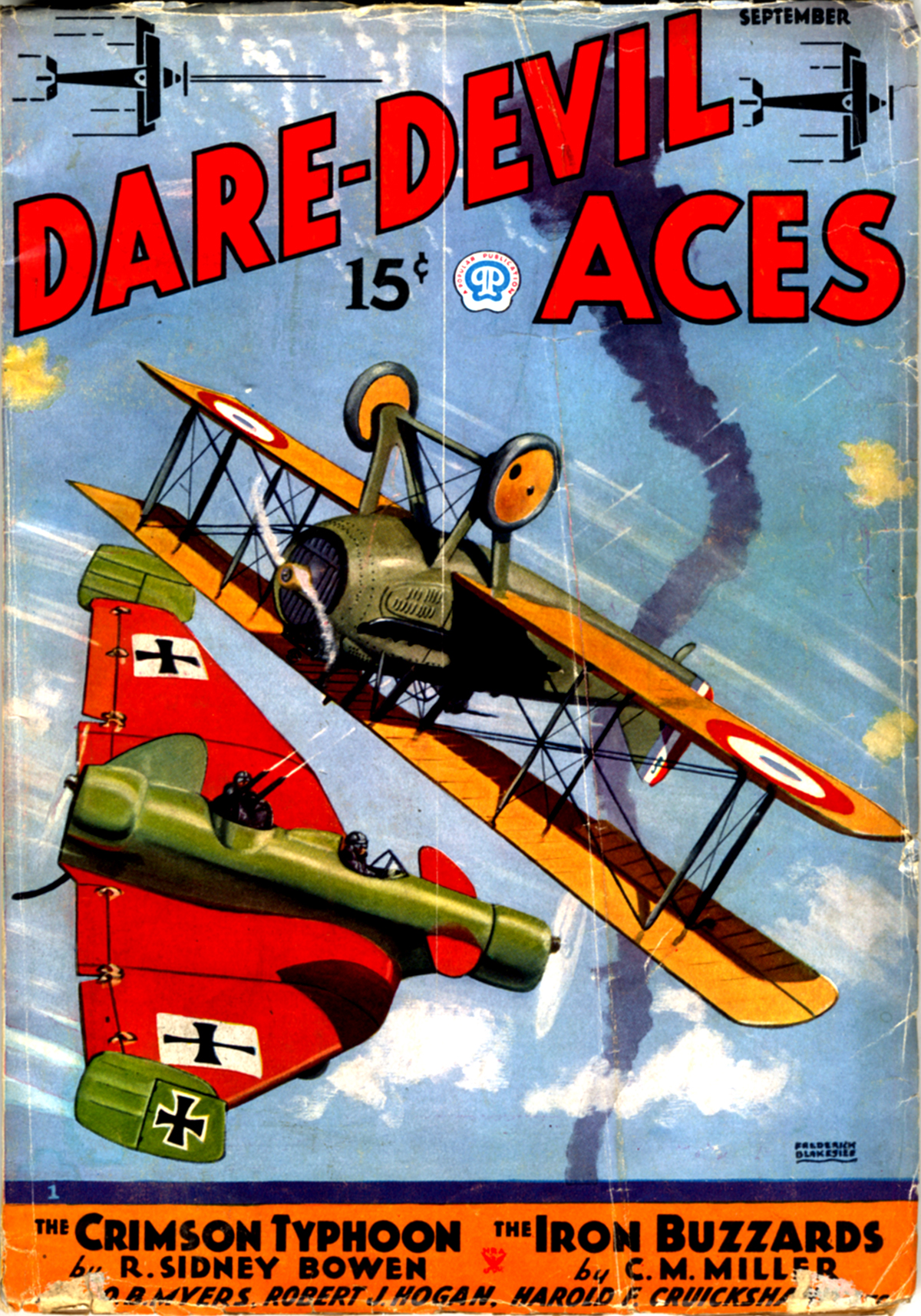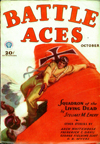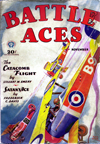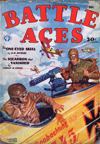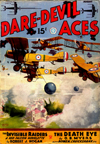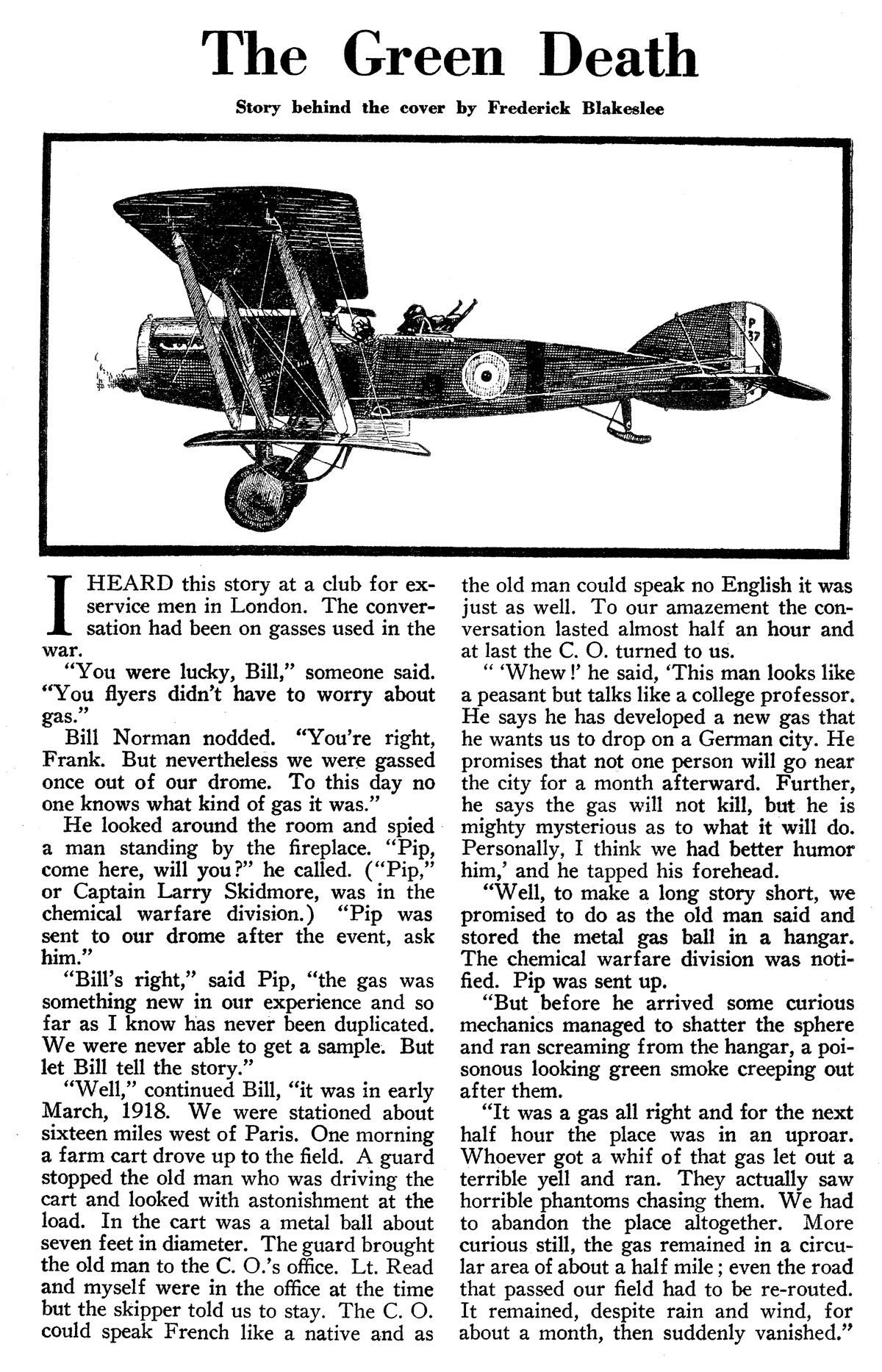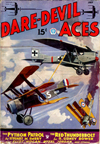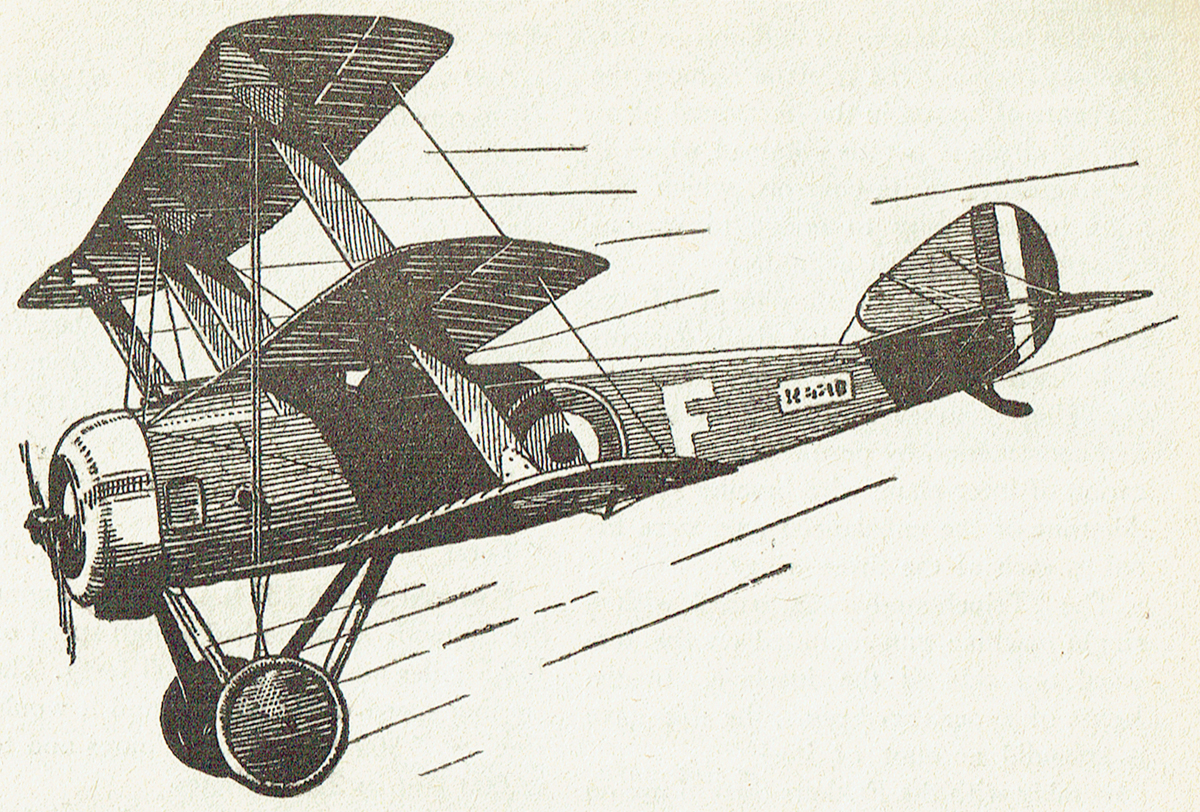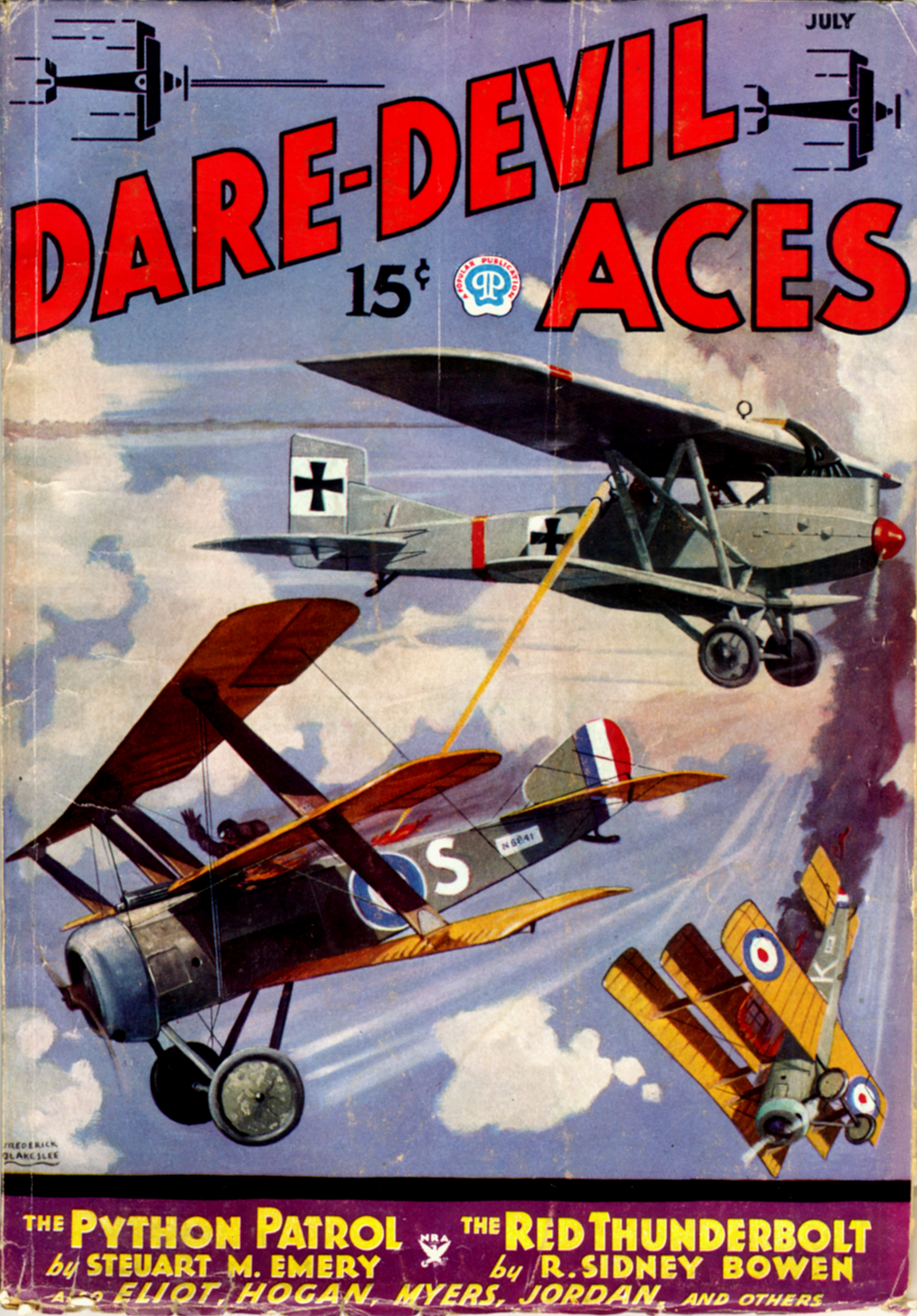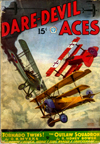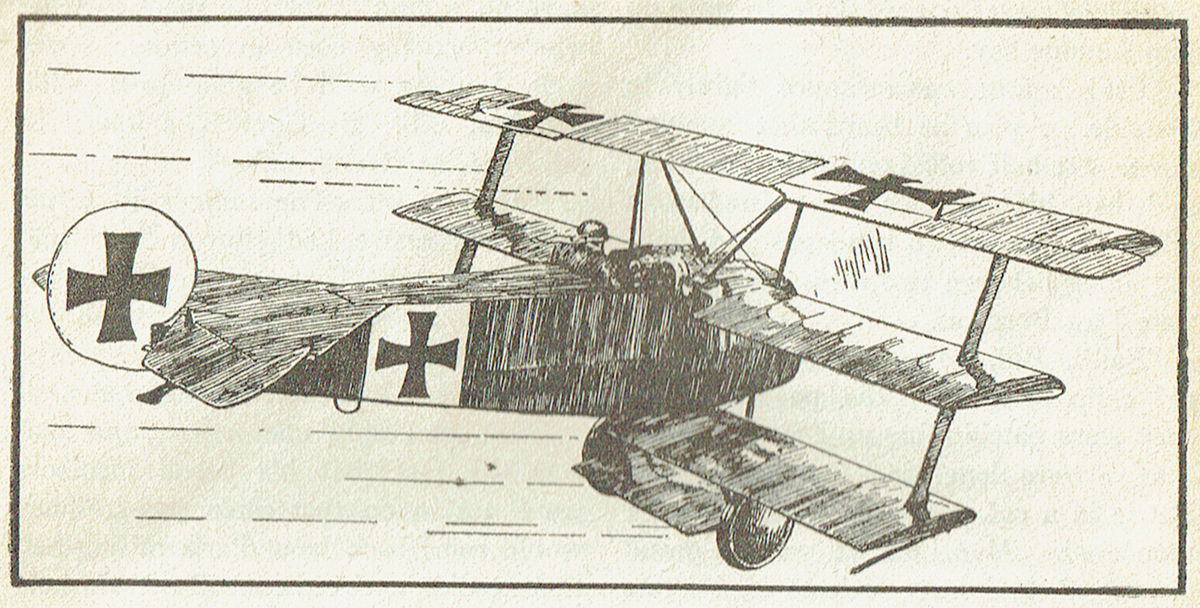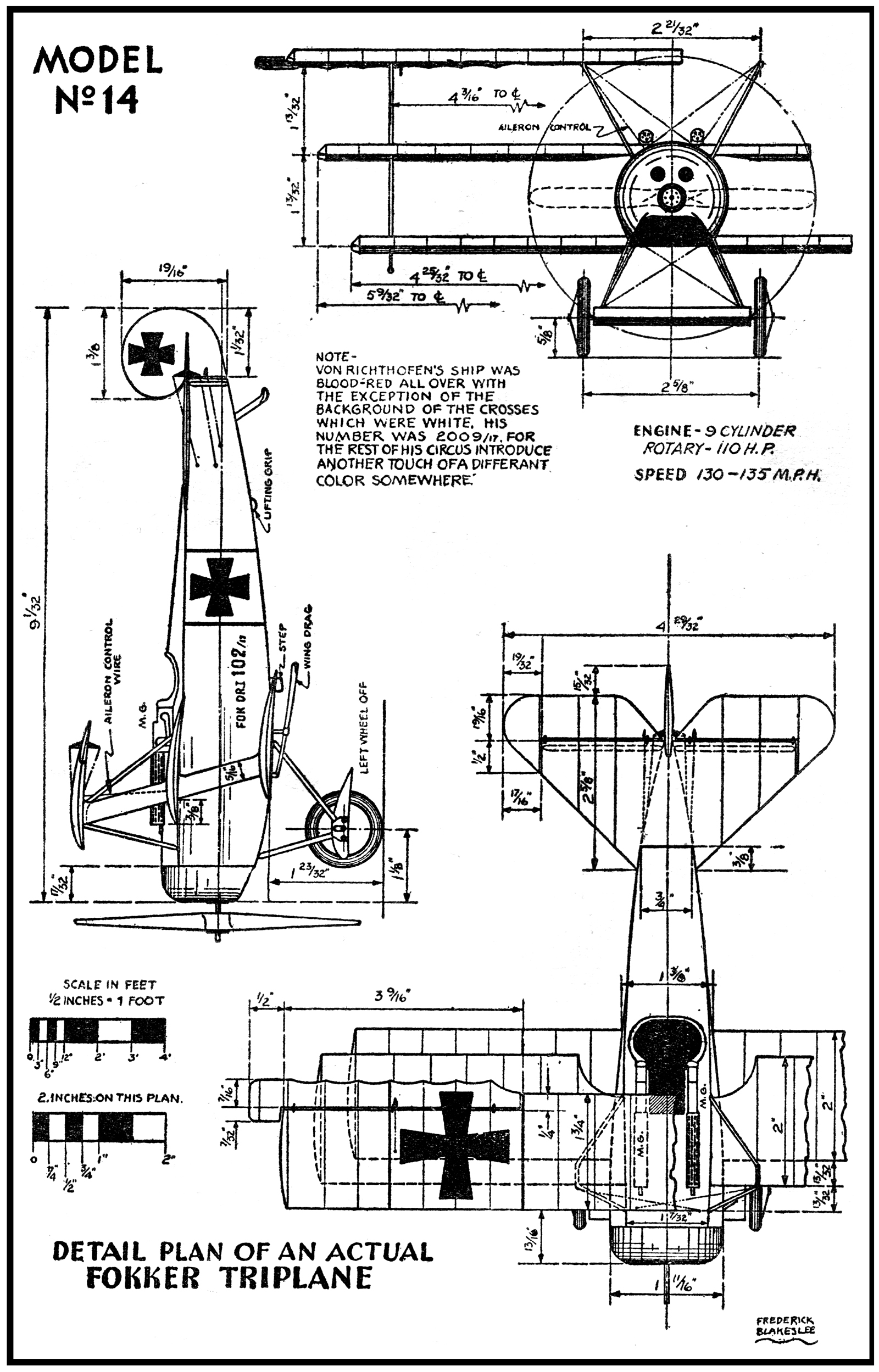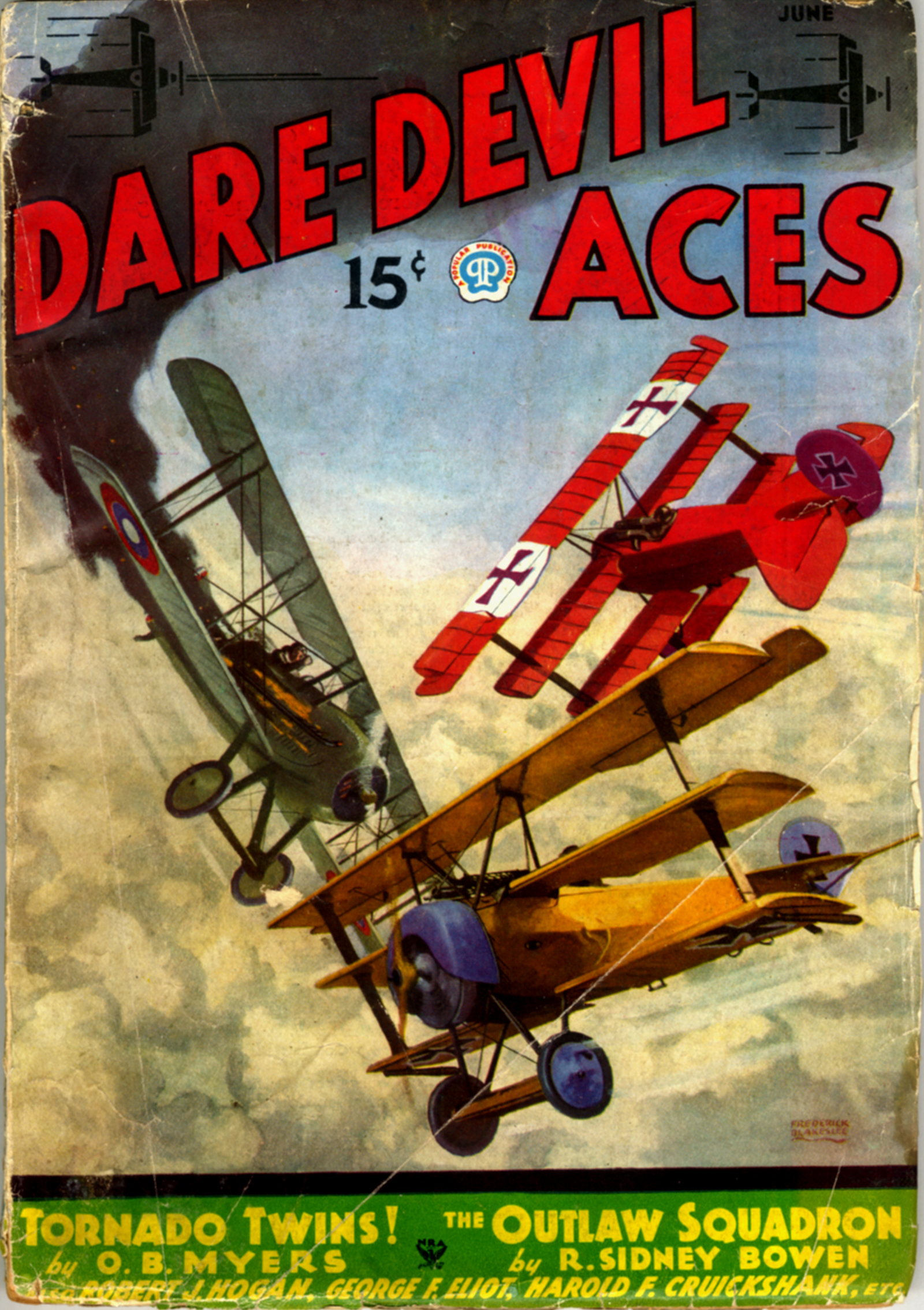“H.P.47″ by Frederick Blakeslee
Frederick Blakeslee painted all the covers for the entire run of Dare-Devil Aces. And each of those covers had a story behind it. This time Mr. Blakeslee brings another of his “scrambled time” covers pitting planes of the great war against modern day planes (those from the 1930’s), from the March 1936 issue of Dare-Devil Aces it’s a plane so new it doesn’t have a name yet—The Handly-Page 47!
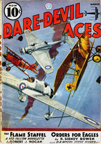 THE HANDLY-PAGE has steadily progressed in design, since before the war to the present day. The pre-war Handly-Page would be a joke today, but in those early days, it was looked upon as the last word in aircraft. It was a two place biplane, but so queer in construction that it would be impossible to describe it. But still, if you want a laugh, look up the pre-war Handly-Page and you’ll get the idea.
THE HANDLY-PAGE has steadily progressed in design, since before the war to the present day. The pre-war Handly-Page would be a joke today, but in those early days, it was looked upon as the last word in aircraft. It was a two place biplane, but so queer in construction that it would be impossible to describe it. But still, if you want a laugh, look up the pre-war Handly-Page and you’ll get the idea.
Then came the war, and with it, the big twin engined Handly-Page 0/400, which was so far superior to the earlier ship that comparisons would be ridiculous.
It was considered the wonder ship of its day, and with its span of one hundred feet, it would still be considered large, even today. However, with its top speed of only 97 m.p.h. it would hardly be in the same class as the same sized ships of today.
The next step in the design of the Handly-Page was the V/1500, which was still larger. It had a span of one hundred and twenty-six feet, while its four engines gave it a speed of 103 m.p.h. This ship was originally built to bomb Berlin, but the signing of the Armistice, of course, removed the opportunity.
Not much was heard from Handly-Page after the war until 1933, when type 38, more generally known as the “Heyford,” made its appearance : We have already shown this ship on the January cover, so we shall not discuss it here.
This month we have painted the very last word in the Handly-Page series. So far this ship is known as H.P.47, as it has not as yet been officially christened by its designers. It is so new at the time of this writing, that no performance figures are as yet available.
However, it is known to have a very high top speed and a low landing speed. There is a tendency for the monoplane to supplant the biplane in military flying in England and several monoplane types are coming into favor. Midway between the huge Fairey night-bombers and the small high-speed fighters, is the H.P.47.
It is a general purpose ship, and has to perform a variety of duties, such as bombing, photography, long distance reconnaissance, and so on. It can even carry torpedoes, to operate with the fleet. But it must also be able to fight, and towards that end, presents a unique feature, notably the slim fuselage, which gives the gunner an unobstructed field of fire.
On our cover we have scrambled time a bit in order that you may compare the H.P.47 with a war-time ship.
We have shown them in combat with the Pfalz DIII and we will say at the outset that it was a mean trick to play on the Germans. In this instance, the Pfalz wouldn’t stand the ghost of a chance against these big ships, because as big as they are, they could have flown circles around the Pfalz, with its mere 125 m.p.h.
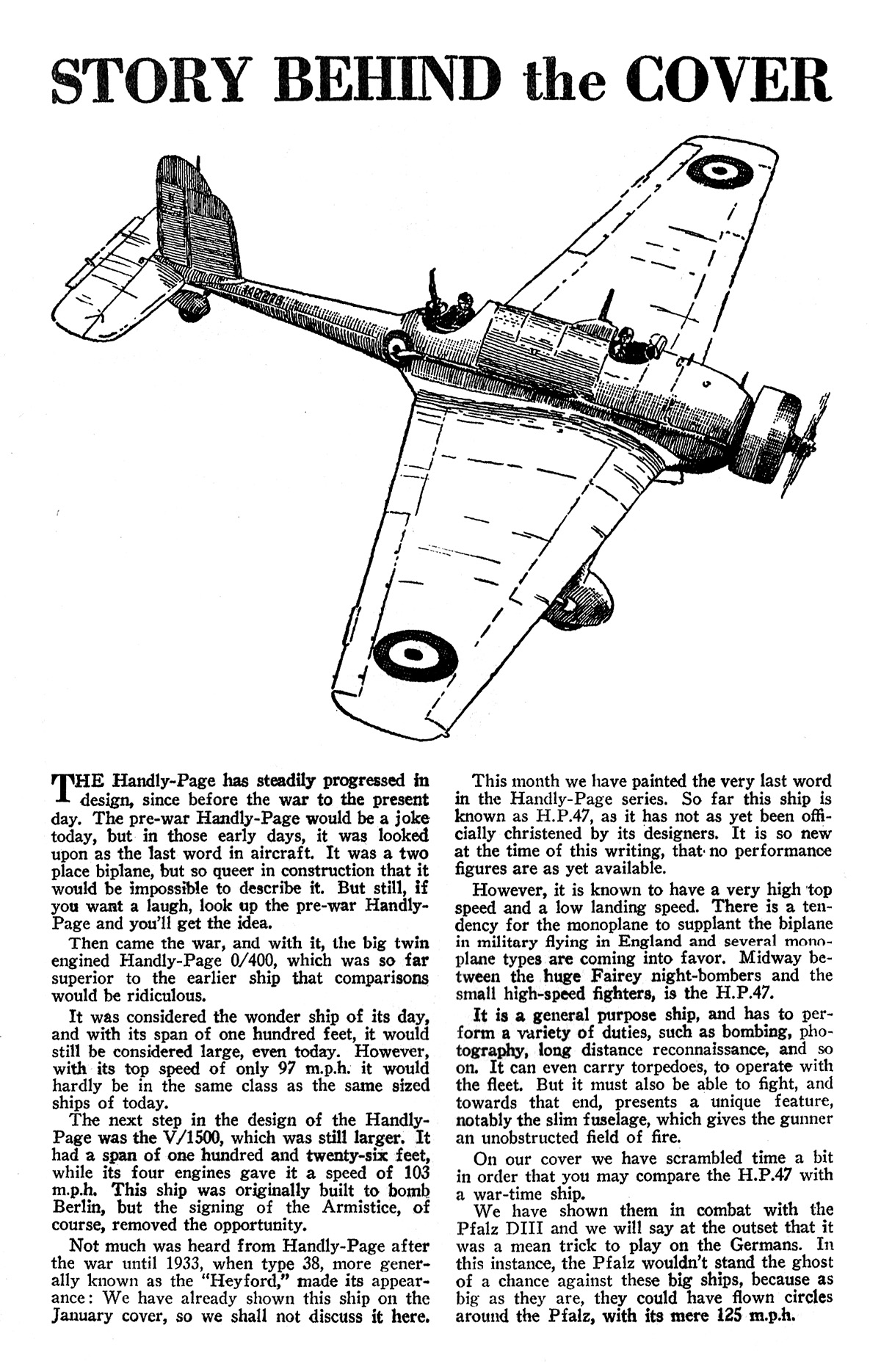
“H.P.47: The Story Behind The Cover” by Frederick Blakeslee
(March 1936, Dare-Devil Aces)





